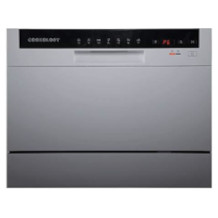Dishwasher purchasing advice: how to choose the right product
- What you need to know
- A dishwasher can save you a lot of time, as you no longer have to do your dishes.
- They are available as free-standing, built-in, or undercounter appliances that can blend in perfectly with your kitchen.
- Whether for singles, couples, or large families – dishwashers come in different sizes for every need.
- In addition to an extensive range of programs, useful features include load sensors, dosing assistants, and start time preselection.
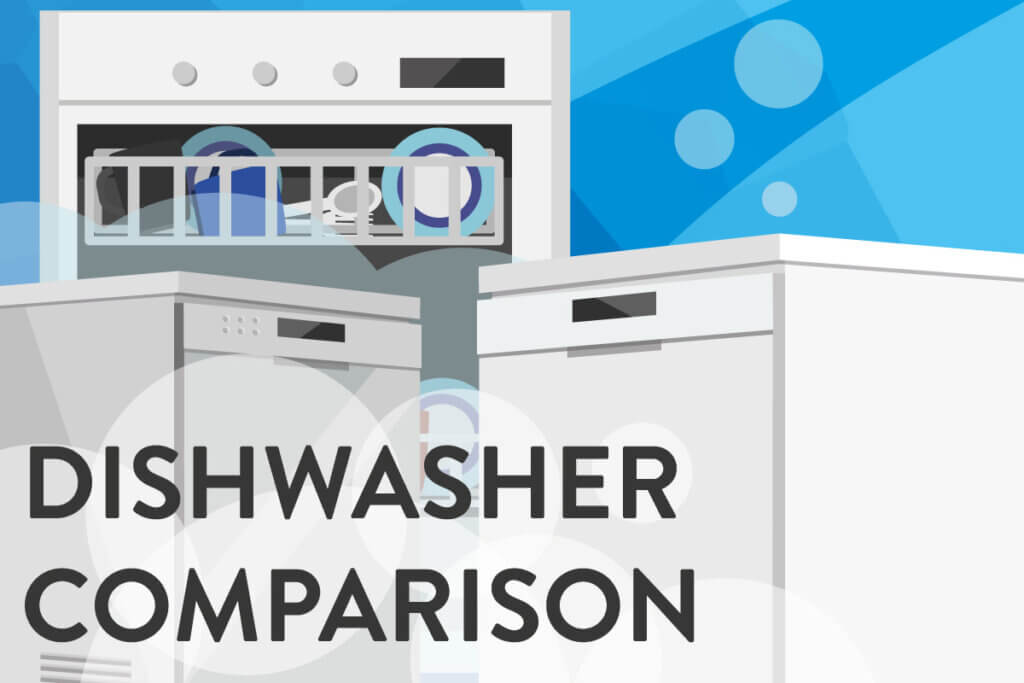
Let’s face it, after a big meal, most people want to lay back and digest, not do the dishes. However, seeing pots and pans pile up in the sink is equally unpleasant as having to scrub them clean. To spare time and reduce stress, it is worth buying a dishwasher. They make washing up by hand redundant – except for items that aren’t dishwasher-safe.
A quick history
The first electric dishwasher was developed by Miele in 1929. At that time, it was just a round tub with legs and a motor. Another 30 years passed before they started looking anything like they do today. In the meantime, the machines have not only become more affordable, but also more economical and functional.
Dishwasher pros and cons
A dishwasher has several advantages. For instance, dishwashers use less energy and water to do your dishes, making them friendly to both the environment and your bank account. For 140 plates, cups, glasses, and cutlery, a dishwasher uses only 4 gallons (15L) of water, whereas washing dishes by hand requires between 11 and 45 gallons (40-70L), which is about two sinkfuls, depending on the technique used. This means that a dishwasher, provided it is fully and properly loaded, gets by with at least 7 gallons (25L) less water compared to the most economical person washing their dishes by hand.
In addition to electricity costs and water, you also save time. What could otherwise be an hour’s worth of dishwashing, becomes about ten minutes of filling and emptying the machine. Thanks to a timer, you can even set it to work when you are not at home.
Since used dishes usually end up in the dishwasher straight away and don’t pile up in the sink first, your kitchen also looks tidier. In addition, dishwashing is more hygienic because the high temperatures kill off germs and bacteria more effectively. While people can rarely tolerate more than 113 °F (45 °C) when washing dishes by hand, the temperatures in the dishwasher are between 140 and 176 °F (60-80 °C). As a bonus, your hands are spared getting soaked in water too long and becoming wrinkly.
Compared to a sponge and some detergent, buying a dishwasher is initially a costly purchase, but the investment pays off in the long run. A drawback of dishwashers is that they cannot wash everything – sometimes you will still need to get your hands wet. After all, not every material is suitable for the machine, as it is subjected to greater stress than during manual dishwashing. These materials include wood and copper, for example.
Advantages
- Lower electricity and water costs
- Time saving
- Order in the kitchen
- Particularly hygienic
- Avoiding soaked hands
Drawbacks
- High acquisition costs
- Some of the dishes are not dishwasher-safe
Different types of construction
Which dishwasher is best suited to your needs depends, among other things, on your budget, as well as your available space. For some people, aesthetics also play a role. Although all dishwashers function the same way, we can make basic distinction between three different types: while freestanding dishwashers can be placed anywhere in the room, undercounter and built-in appliances have to be installed under your kitchen surfaces.
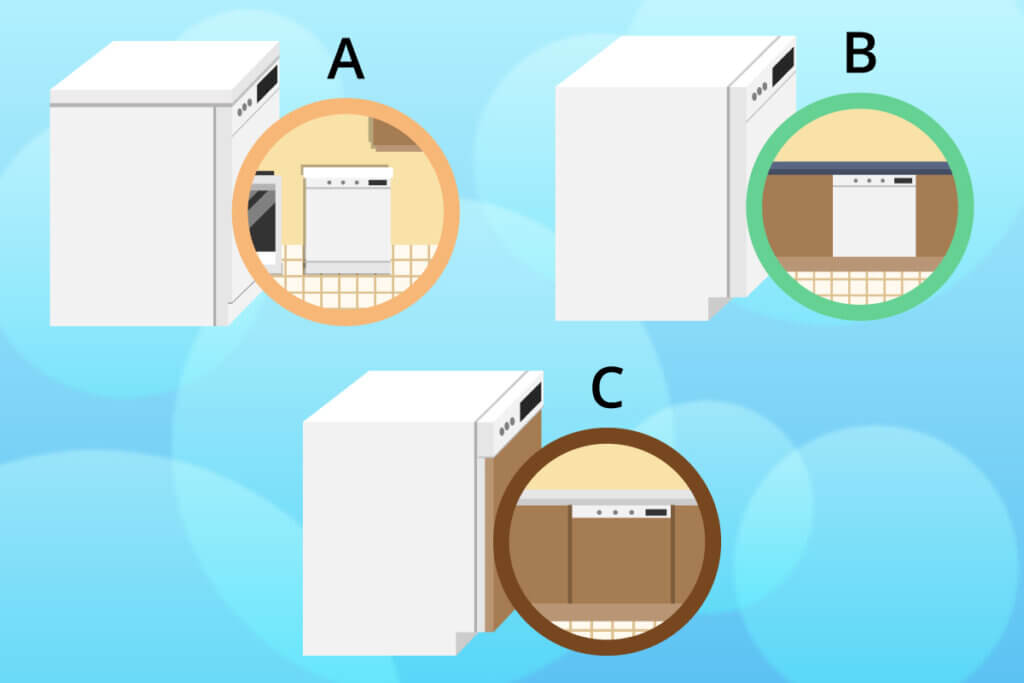
Freestanding dishwashers
Freestanding dishwashers can be placed anywhere as long as electricity and water connections are available. As a result, they offer the most flexibility when it comes installation, which is particularly useful if you’re planning on moving house. At the same time, they also take up the most space. They have a flat top surface, which you can use as an additional storage option. Their front comes in different colors. Unlike built-in appliances, freestanding dishwashers rarely blend into the overall look of your kitchen, which is why a lot of people find them visually unappealing. Freestanding dishwashers are suitable if you’re not bothered by them standing out in your kitchen.
Undercounter dishwashers
Undercounter dishwashers come without a cover plate, as they are integrated under a kitchen countertop. However, their door does not match the look of the kitchen drawers, which means they still stand out in your kitchen. Some models, however, offer the option for attaching a decorative panel that you can adapt to the style of your kitchen. However, these need to be purchased separately. In terms of dimensions, they are designed to fit snuggly under your countertop. Unlike fully integrated dishwashers, the control panel is still visible and easily accessible. Basically, an untercounter dishwasher is the middle ground between freestanding and built-in.
Integrated dishwashers
Whereas a few years ago freestanding dishwashers were the most common type found in households, the trend is now shifting towards appliances that can be fully integrated into your kitchen. This becomes clear when looking at the catalogue of market-leading manufacturers such as Siemens and Bosch, whose product range now consists mainly of built-in machines. One reason for this is that most modern rental flats already have fully equipped kitchens. Bulit-in dishwashers can be adapted to the rest of the kitchen design and blend harmoniously into the overall look. A distinction is made between fully and partially integrated versions:

Fully integrated
Fully integrated dishwashers have a front in the style of the kitchen unit. Since the control panel is located on the top and only becomes visible when the door is opened, fully integrated dishwashers blend most harminiously into your kitchen design.
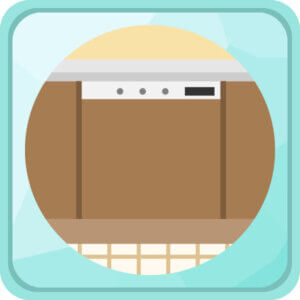
Partially integrated
For partially integrated dishwashers, the operating elements and display are still visible. The rest of the appliance’s front looks like the adjacent kitchen cabinets. Since semi-integratable dishwashers are built directly into the countertop, manufacturers do not use a cover plate on the top.
Size
The size of dishwasher you need depends on both how much space you have, and how big your household is. One-bed flats in particular, often do not have space for a large dishwasher. That is why there are more compact appliances for small spaces on the market, alongside larger models.
The most common dimensions
In terms of height, dishwashers vary between 31.9 and 36.2 inches (81-92cm). However, they usually have height-adjustable feet that can be adjusted to the height of the respective countertop. Adjusting your appliance’s height to your needs can even make loading and unloading easier. In addition, height-adjustable feet can compensate for an uneven floor.
The standard width for dishwashers is 24 inches (61cm) in the US and 60cm (24.1′) in Europe. Dishwashers with this width can hold 12 to 14 place settings and are suitable for larger households, for example families with two children or more. Narrow dishwashers with a width of 17.7 inches (45cm), on the other hand, are ideal for singles or couples. They usually fit between six and ten place settings. The following table summarizes the standard dimensions of dishwashers and their suitability for different household sizes:
| Width | Capacity | Household size |
| 18 inches/45cm | 6-10 place settings | 1-2 people |
| 24 inches/60cm | 11-14 place settings | 3-5 people |
When choosing a dishwasher, load capacity is the most important factor: if you cook every day, you are better off with a larger machine, even if you are the only user, because a small appliance that is quickly filled and needs to run twice a day will ultimately use more energy.
What’s a place setting?
A place setting is a standardized number of cutlery and crockery items used to indicate the capacity of a dishwasher. It consists of a dinner plate, a soup plate, a dessert plate, a saucer, a cup, and a drinking glass, as well as a knife, fork, soup spoon, teaspoon, and dessert spoon. The following classification indicates the usual space requirements for different household sizes:
- 1 person: 4 to 6 place settings
- 2 people: 8 to 10 place settings
- 3 people: 12+ place settings
Large and small: the special shapes
In addition to the standard sizes, there are also some outliers on the market. For particularly large households or catering establishments, for example, there are large-capacity dishwashers, while compact tabletop dishwashers are available for single households with limited space.

Large capacity dishwasher
Since the height of the countertops these days often exceeds 39.4 inches (100cm), but standard dishwashers are lower at 31.9 to 33.5 inches (81-85cm), the latter would not make full use of the space. The solution is a so-called large capacity dishwasher, also known as an XXL dishwasher, with a height of 33.9 to 36.2 inches (86-92cm). Oversized machines are particularly worthwhile if you often use pots and pans as they fit easily into the lower basket. Large capacity dishwashers are recommended for restaurants and large households.

Table dishwasher
With their compact size of about usually 20 x 22 x 18 inches (50x55x45cm), tabletop dishwashers take up very little space, making them perfect for small flats. Thanks to their low weight of around 44 pounds (20kg), you can place them on a worktop or table and use them flexibly for camping, at parties, or in your holiday home. Although their electricity and water requirements are lower than those of a larger dishwasher, their energy efficiency is relatively poor. They are also relatively expensive.
Design, functions, and programs
Depending on the manufacturer, dishwashers are equipped with several features that make everyday life easier. However, more functions usually come with a higher price. Therefore, before buying, you should carefully consider which features are appropriate for your needs.
It’s the inner values that count
All dishwashers have a smiliar basic internal layout. Inside, there are two racks that can be pulled out like a drawer. The larger lower rack is responsible for heavy dishes – dinner plates, soup bowls, pots, and other larger containers. Cutlery baskets are also usually found in the lower rack. The upper rack, on the other hand, is suitable for lighter items such as cups, glasses, and small plates. In some models, the upper basket is adjustable in height or can be angled to accommodate larger items. Some models have a cutlery drawer above the upper rack instead of a cutlery basket in the lower rack. A cutlery drawer creates additional space in the lower basket for large pots or bowls.
Both racks are fitted with rows of plastic spikes to hold plates and saucers. Since they can often be folded down, however, they also allow space for bulky pots and pans. Fixed plate holders, on the other hand, have the advantage that they do not slip. Height-adjustable glass holders are also available for stable placement of wine, champagne, and cocktail glasses. To simplify washing special household items, the following baskets and devices for dishwashers are also an option:
- Special baskets for baby bottles and other drinking bottles
- Fold-away cup rests
- Supports for barbecue cutlery and other large cutlery items
- Clamping devices, for example for long stemmed glasses
Useful features
Some dishwashers have a large number of useful features. However, which extras are necessary always depends on your own needs. The most common features include the following:

Load sensor
If there are too many dishes in your dishwasher, more water is needed so that the water level drops more quickly. In this case, new water must be added immediately. A load sensor detects the water level or the load quantity and ensures optimal water use by regulating the washing time even when the machine is half full. By saving electricity and water, a dishwasher with a load sensor works more efficiently.
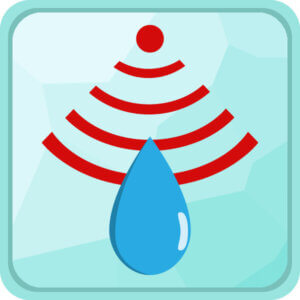
Aqua aensor
Aqua sensors use a light beam to control the rinse water. Depending on the degree of soiling or turbidity, it adjusts water expenditure and the number of rinse cycles and regulates the temperature accordingly. This reduces your energy costs.

Dosing assistant
A dosing assistant optimizes the efficiency of each dishwasher tablet. It ensures targeted dissolution and even distribution. The tabs no longer fall uncontrollably into the interior, but into a small collection tray on the upper basket.

Rinsing zones
By defining different wash zones, a dishwasher can individually adjust the need for water, cleaning time, and so on. To clean dishes with different levels of soiling at once, a dishwasher with wash zones increases the water pressure only in the areas that require more intensive cleaning.

Start time preselection
With this additional function, you can set the start of the wash cycle so that you can activate the machine even when you are not at home. For example, if you set it to run at night, you not only benefit from a cheaper electricity tariff, but also have clean dishes ready the next morning.
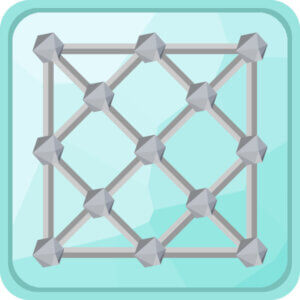
Zeolite drying system
Zeolite drying systems don’t use any electricity. The system works using small mineral beads in a stainless steel sieve in the bottom of the dishwasher which absorb moisture. At the same time, they heat up and thus increase the temperature of the interior. The water then remains stored in the zeolites and is released again during the next rinse cycle. With this function you save water and electricity. However, the technology is somewhat more expensive and so far can only be found in Siemens, Bosch, and Neff machines.
Safety first
All it takes is a burst hose or a defective valve to cause extensive water damage in your home. Since even the highest-quality dishwashers can become deefective, various safety precautions are built into modern appliances. In Siemens and Bosch appliances, for example, these are commonly known as AquaStop systems, in Beko machines as WaterSafe, but their effect is always the same: they automatically shut off the water supply at the tap by means of a valve as soon as the hose starts to leak.
There are two different systems on the market for this:

Waterproof system
This further development of the watercontrol system also has a double solenoid valve and additional drain hoses for added safety. This means that the water supply is stopped even if just one of the two valves or hoses is defective.

Water control system
Dishwashers with a control system are additionally equipped with sensors for the water level and a bottom tray. The valve closes automatically as soon as the required amount of water has flowed in. There is a float switch in the floor pan that also controls the water supply. Thanks to this function, there is no spilling.
The right dishwasher cycle
There is usually a control panel and display on the front of the dishwasher where you can select programs – known as cycles – or additional functions. The display shows the remaining time and the control panel indicates which cycle is currently selected. If you have particularly temperature-sensitive dishes, you should make sure that the dishwasher offers as many different washing cycles as possible for different materials and degrees of soiling. While a short and an eco cycle are the norm nowadays, some models have a wide variety of different cycles. These include, for example, intensive cycles for heavily soiled dishes or applications for different types of dishes, such as premium glasses.
Modern appliances can now have up to twelve cycles, allowing them to achieve an optimal level of cleaning with the lowest possible energy expenditure. If you familiarize yourself a little with the various applications, you will ultimately not only be doing the environment a favor, but also your wallet. A dishwasher’s standard range of cycles should include the following:
Standard cycle: this is intended for universal use and above all for less stubborn soiling. To save operating costs, it works with relatively low temperatures of 113 to 131 °F (45-55 °C) and little water.
Automatic cycle: this intelligent program decides for itself which amount of water and detergent is suitable depending on the load capacity and the degree of soiling. So-called turbidity sensors and a load detection system are used for this.
Eco cycle: energy-saving cycles are characterized by particularly low electricity and water consumption, but they require more time. The dishwasher will run at slightly lower temperatures between 113 and 131 °F (45-55 °C), which is why it is suitable for an average degree of soiling.
Gentle cycle: this is ideal for delicate or very precious dishes, such as expensive glasses. Since it works with temperatures of less than 113 °F (45 °C) and a lower water pressure, it can only deal with with light soiling.
Short cycle: the short cycle can be very useful if you need to use your dishes again later on in the day, for example if you are hosting many guests. It usually only takes between 15 and 30 minutes for a wash cycle. However, plates and the like must not be heavily soiled, as the short cycle may not remove all the impurities in the short time.
Intensive cycle: intended for heavily soiled dishes that have dried out or baby dishes where all germs and pathogens need to be eradicated completely. It not only uses particularly high temperatures of up to 185 °F (85 °C), but also uses new water in every rinse phase and even allows five minutes for rinsing.
Overnight cycle: if you want to take advantage of cheaper night-time electricity without being deprived of sleep by the rumbling operating noises of your dishwasher, use this special rinse application, which can be pre-programmed for quiet use overnight. The operating volume is below 40 dB, which is comparable to a whisper.
Here are the most important wash cycles at a glance:
| Program | Duration | Temperature | Pollution |
| Quick cycle | 15-30 minutes | 113 to 131 °F (45-55 °C) | easy |
| Eco cycle | up to 3 hours | 113 to 131 °F (45-55 °C) | normal |
| Normal cycle | 1-2 hours | 140 to 149 °F (60-65 °C) | normal |
| Intensive cycle | 1-2 hours | 149 to 185 °F (65-85 °C) | strong |
Tabs, salt, and rinse aid
Tabs (also referred to as tablets) tend to be the standard cleaners used in dishwashers. However, in addition to those, dishwashing detergent is also an option, as are powder and gel pods. For optimal cleaning results, it’s a good idea to use a rinse aid and salt. But what is the best combination?
Tabs, powder, or liquid cleaner?
In order to deliver a satisfying result, apart from water, a dishwasher also needs a detergent. You can choose from in various forms. Detergent is for loosening the dirt on soiled dishes so that the water can rinse them off. Depending on the composition, some cleaners can have a descaling effect.

Tabs
Tabs are optimized for one rinse cycle, i.e. only one is used per cycle. A distinction is made between mono-tabs with a single active ingredient and multi-tabs, which not only provide cleaning but also rinse and dry shine. One disadvantage is the possibility of the tabs not dissolving properly, making cleaning ineffective and leaving tab residues all over the dishwasher. In addition, due to the high dosage of the tabs, more chemicals end up in your waste water, which in turn results in a higher need for sewage treatment and a worse environmental impact.

Liquid
Liquid detergents come either in bottles or as gel pods. The advantage of the latter over pods is their more environmentally friendly water-soluble packaging. However, since the bleach that is usually contained in tabs and powders is missing, they can be less effective.

Powder
Since you can adjust the amount of powder to the respective cycle duration and degree of soiling, it can be more economical than pre-portioned tabs. However, overdosing may cause damage to your dishes, which is why you should always follow the dosage instructions and use a measuring cup. As with tabs, powder is also available in a multi-ingredient version.
Optimal softening with dishwasher salt
To prevent limescale from building up on your dishes, in the pipes, or on the heating elements you will need to soften the water your dishwasher uses. To soften your tap water, you will need a special regenerating salt. The salt needs to be filled into a storage container, the correct amount will be indicated by the refill indicator on the control panel. However, you must calibrate it beforehand using information about your local water hardness. Most dishwashers warn their owners that they need to refill the tank every few weeks by means of an audible signal or a visual signal on the display. In addition, many modern dishwashers are now able to determine the hardness of the water and dose the salt accordingly.
Avoiding water spots with rinse aid
Together with the detergent and softener salt, a rinse aid ensures an optimal cleaning result by covering the dishes like a film so that the water drains off completely and leaves no stains. In this way, the liquid also helps to improve the drying process. As with salt, there is also a refill indicator for the rinse aid, which gives a signal as soon as there is a need for replenishment. However, if you use a detergent that includes rinse aid, you don’t need to worry about this and you can switch off the indicator. As a rule, the dishwasher doses the rinse aid automatically. If too much rinse aid is used, streaks may remain on the dishes, while underdosing will leave them with limescale stains.
Connecting and loading
Connecting the dishwasher is a challenge for a lot of us: every manufacturer and model differs in this regard. However, if you follow the tips listed below, you will complete the tedious task in just a few steps:
- Position the dishwasher so that it can be connected directly to the water connection and drain as well as the mains socket, e.g. at the siphon of the sink. Never use an extension cable, as the risk of a short circuit is too high in the event of water damage.
- Turn off both the power and the water supply and make sure there is a valve at the sink that can be connected to the dishwasher’s water supply hose. Upgrade if necessary.
- Connect the dishwasher’s waste water connection, often by simply plugging it in, and fix the hose firmly to the tap’s pipe with a clamp. It is advisable to have a bucket ready in case residual water runs out.
- Restore the power supply, test all connections and turn the water inlet back on.
- Start a test run. If water leaks out, switch the unit off again and tighten the connections.
Correct and incorrect loading
Is the cutlery placed with the ends looking up or down? Where do the plates go and where the glasses? It seems as though everyone has worked out their own routine for putting away their dishes. But with the right technique you can save a lot of space. The lower basket, for example, is for larger cooking utensils such as pots and pans but also plates and chopping boards. The upper basket is intended for glasses, larger ladles, and delicate dishes. To prevent the dishes from running full of water during the wash cycle, they should be placed with the opening facing downwards. The cutlery should always be placed with the handle facing downwards, which increases the cleaning effect. To ensure that the water reaches everywhere and the spray arms remain movable, do not overload the baskets.
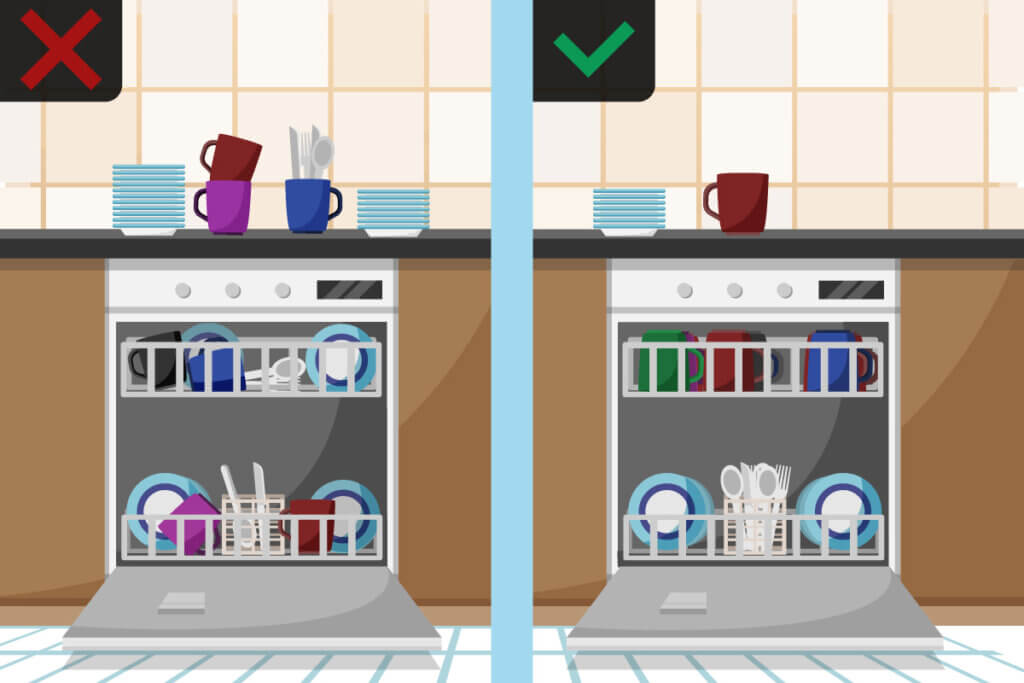
Try the following tips to become a loading pro:
Stow the larger items first and then put away the smaller utensils to fill all the gaps with plates, glasses, and cups.
If you already sort the dishes in the machine, you can put away matching plates, glasses, and other dishes all the more quickly after cleaning, without having to search for set pieces in the washing basket.
Scrape off stubborn food residues in advance with a blunt object so that the dishes get clean more easily without having to use water to rinse them first.
Always empty the machine from the bottom to the top, as residual water that has not dried away, for instance from the undersides of cups, could drip from the top onto the dry dishes in the lower basket.
What belongs in the dishwasher?
Not every kitchen utensil is suitable for the dishwasher. However, as long as the cutlery, pots, and pans are made of stainless steel, they are rustproof and dishwasher safe. Silver cutlery and ceramic plates can also be cleaned in the machine. Porcelain with decoration should, however, be marked as dishwasher-safe so that the color intensity does not fade. Apart from particularly delicate ones, glasses are also generally suitable for the dishwasher.
Is it really dishwasher-safe?
To know whether a kitchen utensil is suitable for cleaning in the dishwasher, it is usually labelled with a pictogram or the term “dishwasher-safe”. However, neither of these is uniformly defined, so there are several different versions. It should also not be confused with the glass and fork symbol, which identifies products that are suitable for contact with food.
Proceed with caution with the following materials:
- Wood: cutting boards, cooking spoons, and the like change their material structure under high temperatures and might fade and splinter.
- Metal: aluminium, tin, copper, and brass do not belong in the dishwasher as they could become dull and black.
- Crystal: the high temperatures not only increase the risk of breakage, but the glass also loses its shine in the long run.
- Plastic: some plastics may discolor or deform over time if they are too close to the heating rods.
It also makes more sense to do the following dishes by hand:
- Old crockery: plates with gold rims and other decorations should be handled with particular care, as the decorations can peel off.
- Cheese grater: the numerous small perforations and sharp blades can hardly be cleaned completely in the dishwasher, so residues always remain.
- High-quality chef’s knives: expensive damask knives will quickly become dull in the dishwasher.
- Pet bowls: to prevent bacteria from pets’ mouths from landing on all the other dishes, pet bowls should not be washed in the dishwasher.
Images 1-18: © FinalCheck

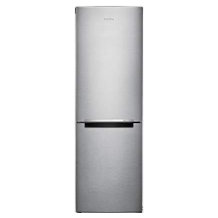
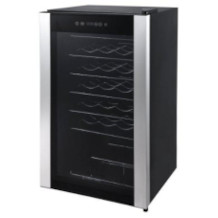
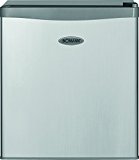
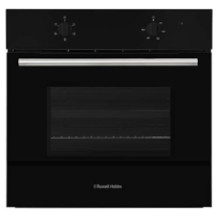
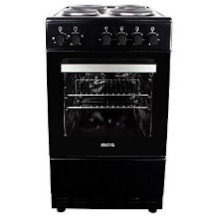
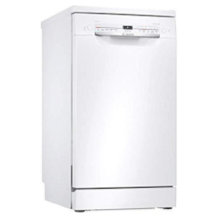

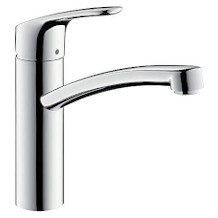
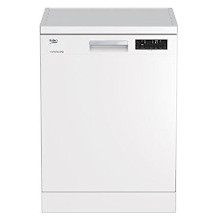
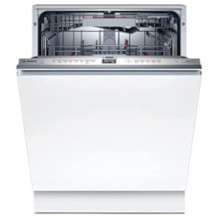
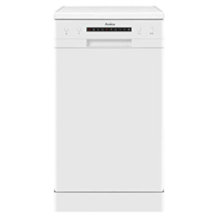
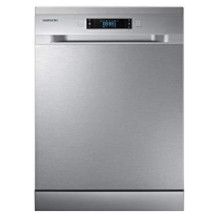
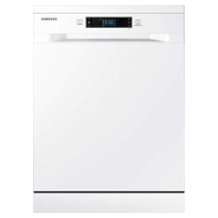
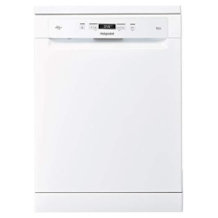

 42 reviews
42 reviews





